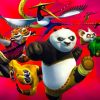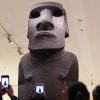ART NEWS
Gambling with ideas
The fifth novel of K.N. Venkatasubba Rao, Jooju, is unusual both in its content and style. Such kinds of novels are rare in Kannada and thus the novel offers a challenge for a serious reader while evaluating it in its entirety. The novel reveals a wide range and varieties of unusual experiences. From monism to highly individualistic spiritual dilemmas, from caste ridden rural life to a heirarchised exploitative urban habitat, from sheer metaphysics to down to earth trade wars and power struggle in Film and Hospital industries, from socialism to capitalism in a factory setting, subtle humour, unholy alliances and cut-throat competitions, the survival of the fittest, morality as an a priori and its consequences – there are stories and sub-stories in this novel which keep the reader under its spell. The sheer zest for telling a complex story (or many stories) is simply breathtaking. Pages run and the paragraph do not end at all. Sometimes, one may find it difficult to keep the pace of the writer.
Written in the stream of consciousness style, the novel does not have a beginning, middle and an end (actually story does not move forward at all like absurd French plays). The back and forth narrative within a well contrived self – the character is named Nataraja, who could be deemed one of the important participants in the expression of experiences, who is physically inert lying in a hospital bed, but subconsciously hyperactive. As the character is a film director, many sub themes within the novel are discovered through him. The identity of the film director slowly disappears and a continuum is established subtly between the obvious past and a palpable present and the future. The other two characters which revolve round this ambitiously created character as satellites are Elumalai and Ananthshayanam who offer credence to his otherwise absurd life. The novelist seems to revel in minute details, sometimes well connected but most of the times highly disjointed. In fact, this discontinuity or ‘not-so well-knittedness’ of experiences, which are both genuine and intense, within the novel, seems to be one of the deliberate attempts at mapping abstract experiences – one may just wonder whether the ‘story’ could have been told in a simple way. Many characters have shades of familiar people around us, may it be the much sought after heroes in Indian films or their mistresses who assumed enormous power in the film industry or in politics, may it be dedicated doctors, may it be committed labour union leaders, but their identities are muffled to suit the complex narrative. Generally the narrative is in comic mode which is subtle and engaging, but perhaps a little over done while creating Christian characters as caricatures.The novel foregrounds several inter-textual elements drawn from classics like Hamlet, Brothers Karamozov, Shilappadikaram, the Nasadiya Sukta – the Hymn of Creation, etc., This technique, which is a marked feature of any ‘post-modern’ novel, makes the reality established within the novel a plausible and an observable feature in the external world (sans the world of the novel).Reading this novel is not a relaxing activity. The events and the characters within the narrative crystallize towards the end into issues of primordial nature – life, existence, death and life after death. It challenges the established notions of successes and failures in life. The end of the novel is actually its beginning. Through the pages, while offering an explanation to the past, foresees, incoherently though, a meaningful future.











